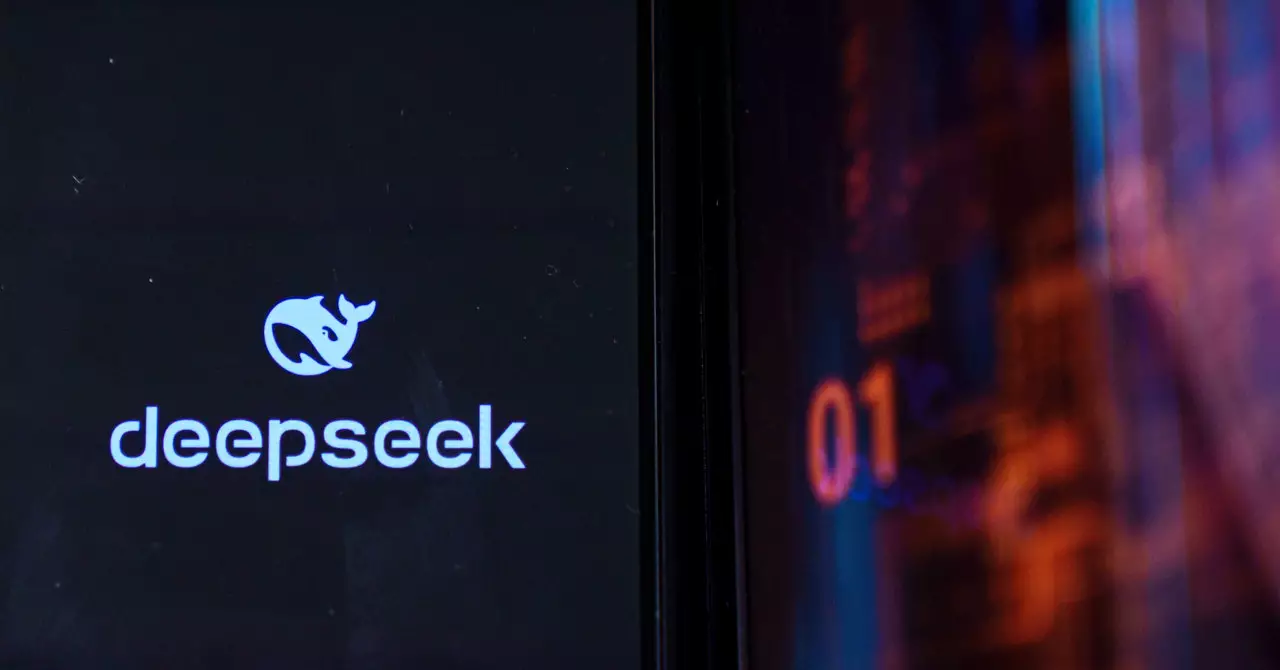The landscape of artificial intelligence has been irrevocably altered with the recent emergence of DeepSeek, a Chinese startup that has managed to capture the attention of the global tech community. Through its AI assistant application, DeepSeek has achieved the remarkable feat of becoming the most downloaded app in Apple’s U.S. App Store within just a weekend. This unprecedented success has raised eyebrows in Silicon Valley, where major tech companies experienced significant declines in their stock prices, particularly Nvidia, which saw a staggering $460 billion wiped off its market capitalization—an event marked by Bloomberg as potentially the most significant loss in U.S. stock market history.
At the heart of this seismic shift is DeepSeek’s innovative open-source AI model, R1, which made its debut earlier this month. What sets R1 apart is its claimed capability to compete head-to-head with industry giants like OpenAI’s flagship model, 01. Perhaps the most astonishing aspect of this development is DeepSeek’s assertion that its groundbreaking model was built using only a fraction of the specialized chips typically deemed necessary for creating advanced AI systems. This revelation has fueled discussions regarding the competitive landscape in AI, particularly concerning the perceived gap between Western and Chinese technology.
Venture capital expert Marc Andreessen characterized this situation as “AI’s Sputnik moment,” implying that it has the potential to catalyze a significant rethink regarding the trajectory of AI innovation globally. Notably, Jack Clark, a co-founder of the AI startup Anthropic, highlighted that DeepSeek’s developments challenge the prevailing notion that Western companies lead in the AI sector. Such statements underscore the importance of R1 as a potential game-changer in the rapidly evolving AI ecosystem.
DeepSeek’s AI assistant offers users a comprehensive suite of features, all accessible for free. Users can pose questions directly to the chatbot and receive prompt answers. For instance, in a demonstration, the AI provided an extensive list of recipes involving pomegranate seeds, showcasing both its versatility and the scope of its knowledge. However, the lack of attributions to specific culinary sources raised questions about the reliability of its information—a point that will likely require further scrutiny as the app gains popularity.
In addition to its interactive question-answer format, DeepSeek’s AI features a search functionality designed to aggregate information from various online resources. This capability was evidenced when the AI highlighted significant news events, such as the Israel-Hamas ceasefire, though its responses sometimes included irrelevant articles that seemed more reflective of the algorithm’s quirks than of curated news.
DeepSeek has also introduced a unique mode called “DeepThink,” which allows users to engage with the R1 model in a more elaborate manner. R1 claims to possess reasoning capabilities, empowering it to break down complex inquiries into digestible explanations. For example, when inquired about major historical events of the 20th century, DeepSeek’s chatbot offered an extensive dialogue outlining potential themes before abruptly terminating its response with an apology and a shift back to less complex subjects.
Despite its impressive features, DeepSeek’s chatbot is not without limitations. Observers have pointed out that, operating under the auspices of Chinese regulatory frameworks, the app may censor topics considered sensitive by the government. This characteristic has drawn criticisms and raised concerns about the integrity of the information provided by the AI.
Nonetheless, the implication of a free and capable chatbot like DeepSeek’s could pose significant challenges to competitors like OpenAI, which currently charges $20 per month for access to its more sophisticated AI models. OpenAI’s reluctance to disclose the foundational “weights” or the intricate thought processes guiding its technological capabilities further compounds the competitive tension between these entities.
DeepSeek’s emergence offers a compelling argument for a reevaluation of the hierarchy in the AI space. For years, Western companies have operated under the assumption that their technological prowess was insurmountable, particularly in the domain of artificial intelligence. However, as DeepSeek has proven, this long-standing belief is increasingly vulnerable. The R1 model, with its unique capabilities and the controversy surrounding its rapid rise, signifies a potential shift in global AI dynamics.
The story of DeepSeek serves as a critical reminder that innovation can emerge from unexpected places, disrupting established norms and creating new conversations within the industry. The future will reveal whether DeepSeek can sustain its momentum and build upon this breakthrough or whether it will serve as a cautionary tale for complacency in a rapidly evolving field.

